Featured
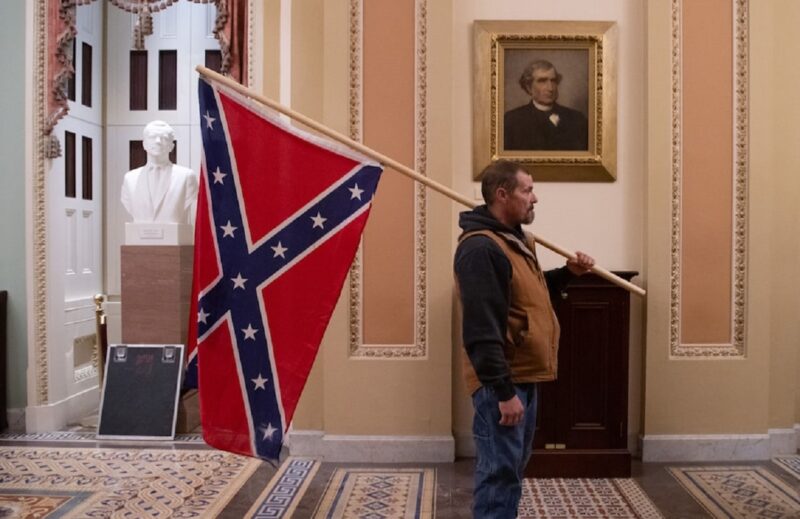 Just how racist is the MAGA movement? This survey measures it. By Jenifer Rubin / Wash Post
Just how racist is the MAGA movement? This survey measures it. By Jenifer Rubin / Wash Post
It has long been understood that the MAGA movement is heavily dependent on White grievance and straight-up racism. (Hence Donald Trump’s refusal to disavow racist groups and his statement that there were “very fine people on both sides” in the violent clashes at the white-supremacist rally in Charlottesville.) Now, we have numbers to prove it. The connection between racism and the right-wing movement is apparent in a new poll from the Public Religion Research Institute.
The results shouldn’t surprise anyone paying attention to the MAGA crowd’s rhetoric and veneration of the Confederacy. “Among all Americans, the median value on the structural racism index is 0.45, near the center of the scale,” the poll found. “The median score on the structural racism index for Republicans is 0.67, compared with 0.45 for independents and 0.27 for Democrats.” Read more
Related: Tracing the cycles of Black empowerment, white backlash. By Ken Makin / CSM
Political / Social
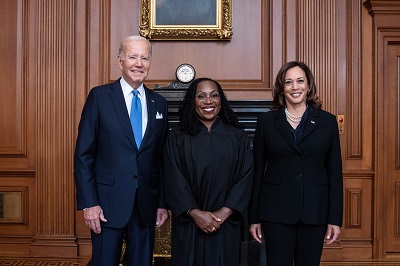 Supreme Court holds investiture ceremony for Ketanji Brown Jackson. By Lawrence Hurley / NBC News
Supreme Court holds investiture ceremony for Ketanji Brown Jackson. By Lawrence Hurley / NBC News
President Joe Biden and Vice President Kamala Harris attended the ceremonial event for Jackson, the first Black woman to serve on the nation’s highest court.
Speaking later in the day at a Library of Congress event, Jackson referred to the historic nature of her appointment, stressing the importance of representation for Black people, women and other groups historically excluded from power in the U.S. Read more
 Ron DeSantis’s Race Problem. By Charles M. Blow / NYT
Ron DeSantis’s Race Problem. By Charles M. Blow / NYT
In July, Gov. Ron DeSantis of Florida appointed Jeffery Moore, a former tax law specialist with the Florida Department of Revenue, to be a county commissioner in Gadsden, the blackest county in the state. On Friday, Moore resigned after a picture emerged that appeared to show him dressed in Ku Klux Klan regalia. It was in that debate that his Democratic opponent, Andrew Gillum, said, “Now, I’m not calling Mr. DeSantis a racist. I’m simply saying the racists believe he’s a racist.” Read more
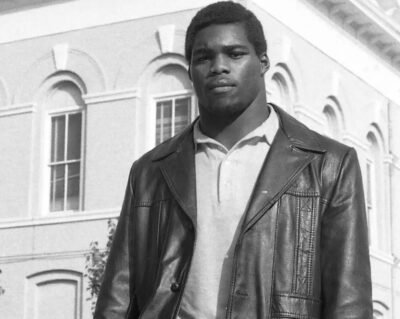 The Racial Divide Herschel Walker Couldn’t Outrun. By John Branch / NYT
The Racial Divide Herschel Walker Couldn’t Outrun. By John Branch / NYT
As a teenage football prodigy, Mr. Walker was pressed to join a fight for civil rights in his hometown. His decision echoes decades later.
It may not be an exaggeration. In a predominantly Black neighborhood of small homes about a block from where Mr. Walker went to high school, nine people, including a man who said he was Mr. Walker’s cousin, gathered on a steamy Saturday in July to eat and talk in the shade. No one planned to vote for Mr. Walker. Most scoffed at the thought. Read more
Related: Federal judge rules against Stacey Abrams group in voting rights lawsuit. By AP and NBC News
 The top issues Latino voters are worried about in the 2022 midterms. By Christian Paz / Vox
The top issues Latino voters are worried about in the 2022 midterms. By Christian Paz / Vox
While most Latinos rank the economy as a top midterms priority, their opinions on abortion and LGBTQ Americans are much more varied.
That nuance in social issues comes through in Pew’s new data on attitudes and feelings of Latinos nationwide. According to the survey of 3,029 Latino adults provided to Vox, both Republican and Democratic Latinos say the economy and education are one of their top four concerns, but Latino Republicans are also worried about crime and immigration, while Democratic Latinos worry more about gun control and health care. Read more
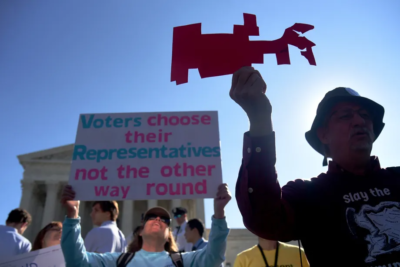 Alabama’s high-stakes Supreme Court fight over racial gerrymandering in Merrill v. Milligan. By Ian Millhiser / Vox
Alabama’s high-stakes Supreme Court fight over racial gerrymandering in Merrill v. Milligan. By Ian Millhiser / Vox
Merrill v. Milligan could eliminate one of the few remaining nationwide safeguards against rigged legislative maps.
The lawsuit deals with Alabama’s congressional maps, which would give only one of the state’s seven congressional districts — 14 percent of the state’s total population — a real chance of electing a Black representative, even though African Americans make up about 27 percent of Alabama’s population. Cases alleging racial gerrymandering are notoriously difficult to litigate, much less to win. And the path that brought Merrill v. Milligan to the Supreme Court — the justices will hear the case on Tuesday — shows why. Read more
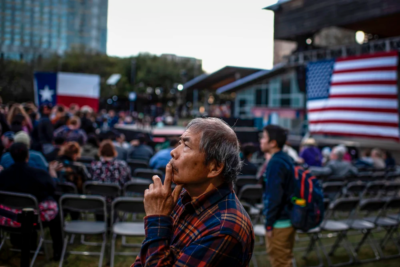 Majority of Asian Americans in Texas want to vote, but don’t feel like they’ve been heard. By Kimmy Yam / NBC News
Majority of Asian Americans in Texas want to vote, but don’t feel like they’ve been heard. By Kimmy Yam / NBC News
The racial group, the report revealed, is the fastest-growing voter population compared to all other races in the state.
Researchers surveyed 2,700 likely voters in Texas, including 660 Asian Americans, in July. Participants were surveyed online and in English. The results showed 42% of Asian Americans and Pacific Islanders identify as Democratic and 29% as Republican. About one-third identify as independent. As for key issues, 98% of participants see economic recovery as a priority. They also reported inflation, education and voting rights as critically important. In terms of their policy opinions, Asian American and Pacific Islander voters skew liberal, the report found, with Republicans in the group also leaning left of Republicans statewide. Read more
 Hurricane Ian: Fort Myers Black residents suffering amid devastation. By Nada Hassanein / USA Today
Hurricane Ian: Fort Myers Black residents suffering amid devastation. By Nada Hassanein / USA Today
Black residents of Dunbar said they fear the aftermath of Hurricane Ian will be no different, saying the city’s wealthier, majority-white neighborhoods typically have better power grids and get power back sooner. “No matter how long I’ve lived in Fort Myers and seen storms, it’s been like that. This neighborhood that’s full of people of color, always comes last,” she said. “The people that have more money, that’s who gets service first,” she said, adding that it makes her feel “they look down upon us, and they are servicing the ones there that can afford generators.” Read more
 Why aren’t flagship universities enrolling more Black students from their state? By
Why aren’t flagship universities enrolling more Black students from their state? By
Uchenna Ihekwereme (shown) walked to the front row of the 150-person auditorium for a political science class at the University of Georgia. She sat down, as she always did, with her back to the sea of white faces. She had become accustomed to being the only Black student in her classes, but it could still be unsettling. For at least a decade, the University of Georgia has failed to enroll Black students at a rate proportionate to the number of Black high school graduates in the state. In 2020, just 6% of freshmen who enrolled at the university were Black, compared with 36% of the state’s public high school graduates. Black students make up between 20% to 50% of public high school graduates in several states, but their enrollment in these states’ public flagship universities is much lower. Read more
Ethics / Morality / Religion
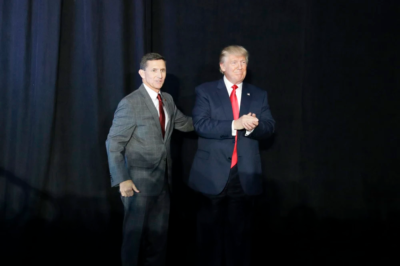 Michael Flynn, Trump and America’s Christian nationalism threat. By
Michael Flynn, Trump and America’s Christian nationalism threat. By
Flynn has become a central figure in a network of extremists, conspiracy theorists and election deniers held together by the mechanism of Christian nationalism.
Last month, a new University of Maryland Critical Issues Poll was released suggesting Christian nationalism was becoming a bigger factor among Republican voters, with 61% of Republican respondents saying they supported declaring the United States a Christian nation. As the scholars Samuel Perry and Philip Gorski show in their recent work “The Flag and the Cross,” white Christian nationalism especially is not about orthodox Christian belief or even Christian practice. The “Christian” in Christian nationalism is really a cultural identity that uses Christian symbols and myths to bind together American nationalism to white ethnicity. Read more
Related: Nonreligious women of color convene to talk Christian nationalism, reproductive rights. By
Related: Interfaith group hosts Hill briefing on Christian nationalism. By Jack Jenkins / RNS
 How “religious freedom” became a right-wing assault on equality and the rule of law. By Paul Rosenberg / Salon
How “religious freedom” became a right-wing assault on equality and the rule of law. By Paul Rosenberg / Salon
“American Crusade” author Andrew Seidel on the radicalized Supreme Court and its quest to enshrine Christian power
I recently interviewed Andrew Seidel by Zoom. This transcript has been edited for clarity and length. The title of your book is “American Crusade.” So how would you characterize this crusade? What are the crusaders trying to accomplish? “Religious freedom has long been a shield. It is this right that all Americans possess, and the words etched into the edifice of the Supreme Court tell us, “Equal justice under law.” This right applies equally to all of us. It was supported by a strong separation of church and state, but not anymore. There is a well-funded powerful network of Christian nationalist organizations and judges that are working to weaponize the First Amendment, to turn the protection of religious freedom enjoyed by all of us into a weapon of Christian privilege for the few. “ Read more
 Survey: Confederate memorials still divide Americans and religion is a big predictor. By Yonat Shimron / RNS
Survey: Confederate memorials still divide Americans and religion is a big predictor. By Yonat Shimron / RNS
Majorities of Protestants, Catholics and Mormons support efforts to preserve Confederate monuments and memorials, a PRRI survey finds. An 2020 image of the late Georgia congressman and civil rights pioneer U.S. Rep. John Lewis is projected onto the pedestal of the statue of confederate Gen. Robert E. Lee, in Richmond, Virginia. The statue was removed in 2021. (AP Photo/Steve Helber)
The new PRRI survey conducted with E Pluribus Unum, a nonprofit organization dedicated to building a more equitable and inclusive South, finds that 51% of Americans favor preserving Confederate history, memorials and statues, while 46% are opposed. The divisions fall along party, race and religious lines: Republicans and white evangelicals overwhelmingly support preserving memorials to Confederate history, while Black Americans, non-Christians, Jews and unaffiliated Americans see those memorials as a symbol of racism. Read more
 ‘Sisters in the Wilderness’ after 30 years: Resiliency and survival as the legacy of womanist theology. By LaRyssa D. Herrington / NCR
‘Sisters in the Wilderness’ after 30 years: Resiliency and survival as the legacy of womanist theology. By LaRyssa D. Herrington / NCR
“Sarah Presents Hagar to Abraham,” a drawing by the Belgian artist Jean Antoine Verschaeren (1803–1863), depicts a story from the Book of Genesis. In “Sisters in the Wilderness,” Womanist theologian Delores Williams uses this story to illustrate Black women have been unavoidably shaped by the problems and desires of those who oppress them. (Artvee)
For Williams, this history, when reread in light of the biblical account of Hagar, illustrates that Black women have been unavoidably shaped by the problems and desires of those who oppress them. It is the lens of motherhood by which Williams seeks to explore what she describes as the struggle between power and powerlessness in human relationships that disrupt peace in family units, breeds enmity between women (and men), and sends poverty-stricken slaves — in this case, a female slave — scurrying into society’s “wilderness.” Read more
Historical / Cultural
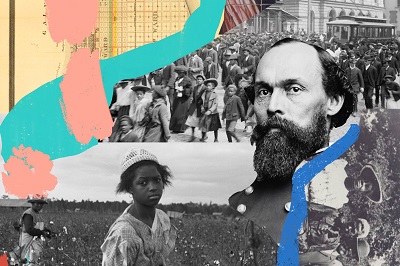 Can Liberal Evanston, Illinois, Atone for Its Racist Past? By Kari Lydersen / The New Republic
Can Liberal Evanston, Illinois, Atone for Its Racist Past? By Kari Lydersen / The New Republic
The city is the first in the country to pass, and begin to implement, a reparations program. Changing laws to undo discrimination is one thing. But will white citizens really be willing to pay for it?
The first round of reparations this spring involved granting $25,000 worth of mortgage or down payment assistance or home repairs to each of 16 Black residents who lived in Evanston and were at least 18 between 1919 and 1969; they are known under the program as “ancestors.” Their descendants will be eligible for future grants. Funding comes from the 3 percent tax on gross cannabis sales, a new source of revenue that makes symbolic sense, since Black people have disproportionately suffered from the war on drugs. The reparations fund will be $10 million in all, with the initial 16 grants of $25,000 making up 4 percent of the total, or $400,000. Read more
 Native Americans’ decades long struggle for control over sacred lands is making progress. By Rosalyn R. Lapier / The Conversation
Native Americans’ decades long struggle for control over sacred lands is making progress. By Rosalyn R. Lapier / The Conversation
Shown is Mauna Kea, a dormant volcano in Hawaii, with an observatory visible on its summit. Native Hawaiians consider the mountain sacred and object to construction on it. Chris Condon/PGA TOUR via Getty Images. Who should manage public land that is sacred to Native Americans?
That is the question that the United States government and some states hope recent policy changes will address by giving Indigenous people greater input into managing such land. Co-management, as the policy is called, might alleviate the friction that emerges when sacred landscapes are managed without Native American input. Native American religions, similar to other religions, view areas as sacred because they are the homes of gods or places that are sanctified by a god. Sacred places may be physically small or large areas, they may be built or natural areas, such as churches and shrines, or mountains and rivers. Read more
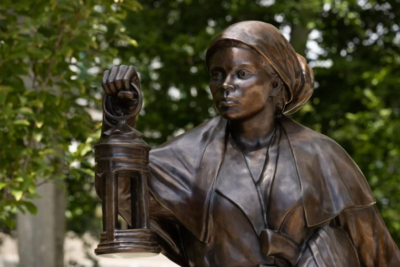 The CIA honors Underground Railroad hero Harriet Tubman as model spy with new statue. By Dan De Luce / NBC News
The CIA honors Underground Railroad hero Harriet Tubman as model spy with new statue. By Dan De Luce / NBC News
The move is part of an effort by the CIA to bolster diversity at an agency where minorities have long been underrepresented.
When CIA employees walk into their headquarters in suburban Virginia, they are now greeted by a young Black woman. She’s holding a lantern and armed with a pistol in her belt, looking fearless. The woman is Harriet Tubman, a hero of the Underground Railroad, portrayed in a striking bronze statue recently unveiled at the Central Intelligence Agency in Langley. The idea for the statue came from CIA officers who studied Tubman in a leadership class, including her time spying for the Union Army during the Civil War. Read more
 My great-grandparents died in the Holocaust and were almost forgotten. By Zoe Zolbrod / Salon
My great-grandparents died in the Holocaust and were almost forgotten. By Zoe Zolbrod / Salon
It wasn’t until I was an adult that I learned the truth. Then a surprising discovery filled in more missing pieces
When I launched into “The U.S. and The Holocaust,” Ken Burn’s documentary exploring the United States’ response to Jewish refugees fleeing Hitler, I knew I’d be seeing images that have disturbed my consciousness most of my life: locks of German war planes against a white sky, the shattered glass of Jewish businesses, crowds celebrating the processions of Nazi troops. According to the Nuremberg Laws, I’d be classified as a mongrel, a mischling of the first degree. It wasn’t until I was an adult that I learned my great-grandparents had died in a concentration camp. Read more
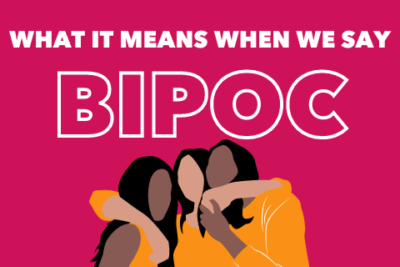 The Lexicon Origins of People of Color. By Warren Milteer Jr. / AAIHS
The Lexicon Origins of People of Color. By Warren Milteer Jr. / AAIHS
The term “people of color” is in a strange place in its evolution as part of the American lexicon.
The phrase is frequently thrown around by media figures as a shorthand for the United States’ numerous minority populations. People more specifically labeled as “Black,” “Asian,” “Hispanic,” and “Indian” frequently fall into this catch-all category. In an attempt to be more specific, some people have adopted “Black and Indigenous people of color,” more commonly known by its abbreviation, BIPOC. As “people of color” has become more entrenched in media language, however, it has also developed a cadre of critics. The backlash has included an assortment of misunderstandings and flat-out conspiracies about the origins and purposes of the term. Read more
 The Case for Leaving America to Escape Racism. By DeNeen L. Brown / Wash Post
The Case for Leaving America to Escape Racism. By DeNeen L. Brown / Wash Post
As a Black woman, I want freedom from oppression. So I’m finally plotting my exit.
In December 2021, I jumped on an airplane to reconnect with the continent — and to explore Ghana as a potential place to live and plant new roots. It was a time when America seemed to be splintering, with state laws banning the teaching of critical race theory — effectively, barring the teaching of historical truths — and constant warnings about real dangers to democracy and the possibility of a new civil war. Democracy appeared to be imploding, and the country seemed to be increasingly dangerous for Black people — although racist terror was embedded in the fabric of American history and is not a new phenomenon. Read more
 ‘Till’ Review – Emmett Till Biopic Does the Best It Can With Tough Material. By Kyndall Cunningham / The Daily Beast
‘Till’ Review – Emmett Till Biopic Does the Best It Can With Tough Material. By Kyndall Cunningham / The Daily Beast
Emmett Till’s life was cut short in the most horrific way. Is there any way to mine entertainment from his murder—and his mother’s grief? This movie makes a strong attempt.
Few non-activist figures from the civil rights era have latched onto the American consciousness like Emmett Till. In 1955, the 14-year-old Chicagoan was brutally killed by two white men while visiting Mississippi; he had been accused of whistling at one of their wives, Carolyn Bryant, at a grocery store. Like the television adaptation, Till attempts to center the perspective of Mamie Till-Mobley, Emmett’s single mother. It was her decision to hold an open-casket funeral for her son so that the press could capture his mangled body, which became one of the news stories to propel the Civil Rights Movement. Read more
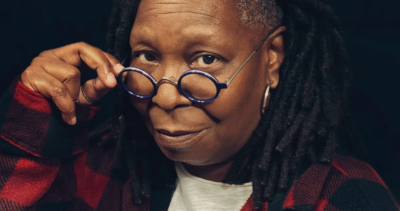 Whoopi Goldberg Will Not Shut Up, Thank You Very Much. By Jazmine Hughes / NYT Magazine
Whoopi Goldberg Will Not Shut Up, Thank You Very Much. By Jazmine Hughes / NYT Magazine
No matter how often she gets into trouble, she refuses to hold anything back.
Throughout her career, Goldberg has taken it upon herself — whether as a comic, or a social critic on “The View,” or the author of “Is It Just Me? Or Is It Nuts Out There?,” her ode to public civility, or even a producer of films like the forthcoming “Till,” about what happened after Mamie Till decided to send her son away for the summer — to temper that ignorance. In a September screening for the film, in which Goldberg plays Mamie’s mother, she spoke to the necessity of telling these stories: “You can’t get pissed off when people are stupid when you have the ability to make them smarter.” Read more
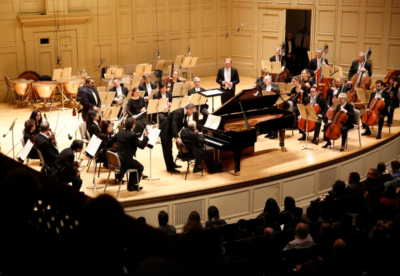 Where are the Black musicians in the country’s largest orchestras? By Jeff Lunden / NPR
Where are the Black musicians in the country’s largest orchestras? By Jeff Lunden / NPR
In 2014, the League of American Orchestras, a service organization representing professional and amateur symphony orchestras around the United States, published a study on diversity and found that only 1.4% of orchestra musicians were Black.
In harpist Ann Hobson Pilot’s experience, Black musicians in orchestras can feel isolated. She told a podcast produced by the Black Orchestral Network that when she joined the Boston Symphony Orchestra in 1969, she was its very first Black musician. “When I looked around the orchestra, I didn’t see anyone in there that looked like me,” she said. “And it was another 20 years before another Black player was hired, which is Owen Young, the wonderful cellist. And when I left 20 years later, Owen Young became the only black player in the BSO.” He still is. Read more
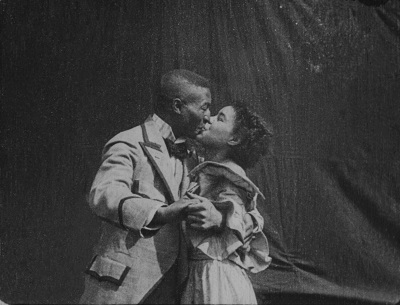 A New Academy Exhibit Attempts to Atone for Hollywood’s Past. By Ed Rampell / The Progressive Magazine
A New Academy Exhibit Attempts to Atone for Hollywood’s Past. By Ed Rampell / The Progressive Magazine
‘Regeneration: Black Cinema, 1898-1971,’ now on display at the Academy Museum of Motion Pictures, reckons with institutional racism and celebrates Black contributions, on and off screen. Shown is a still from 1898 “Something Good — Negro Kiss,” currently on display at the Academy Museum of Motion Pictures’ exhibit “Regeneration: Black Cinema, 1898–1971”.
I feel like I’m in heaven!” gushed a glowing Ava DuVernay. I overheard the director of 2014’s Civil Rights-era epic Selma at an August 17 press preview of the Academy Museum of Motion Pictures’ Regeneration: Black Cinema, 1898–1971 praising “the first large-scale exhibition…to examine the compellingly rich history of Black participation in American cinema, both inside and outside the Hollywood studio system,” as co-curators Rhea L. Combs and Doris Berger write in their 288-page companion book with the same name as the groundbreaking show. Read more
Sports
 How ‘positional segregation’ keeps Black coaches stuck in NFL pipeline. By Tom Schad, Mike Freeman and Steve Berkowitz / USA Today
How ‘positional segregation’ keeps Black coaches stuck in NFL pipeline. By Tom Schad, Mike Freeman and Steve Berkowitz / USA Today
A USA TODAY analysis of NFL coaching staffs shows how white quarterbacks coaches get fast-tracked, while Black running backs coaches get stuck.
 Suns trying to ‘block out the noise,’ get past team owner Robert Sarver’s racism and sexism. By Marc J. Spears / Andscape
Suns trying to ‘block out the noise,’ get past team owner Robert Sarver’s racism and sexism. By Marc J. Spears / Andscape
‘Since he decided to sell the team, we could move forward and focus on the goal that’s at hand.’ From left to right: Phoenix Suns players Chris Paul, Devin Booker and coach Monty Williams are trying to move forward after owner Robert Sarver was suspended for one year and fined $10 million by the NBA. Christian Petersen/Getty Images
The revealed racist, sexist and misogynistic acts of team owner Robert Sarver have put a dark cloud over the Phoenix Suns that has deeply affected the players, coaches and general manager. “It’s cloudy right now, to tell you the truth. I don’t know what is in between the lines,” Suns center Deandre Ayton told Andscape during media day at Events On Jackson. “We have to figure it out before the first jump ball. Read more
 LeBron James is buying into the pickleball explosion. By Des Bieler / Wash Post
LeBron James is buying into the pickleball explosion. By Des Bieler / Wash Post
After acquiring stakes in top-level teams from baseball to hockey to auto racing to European soccer, LeBron James is now buying into a sport on a truly meteoric ascent: pickleball.
The Los Angeles Lakers superstar is part of a new ownership group announced Wednesday by Major League Pickleball, which has a team-focused format that differentiates it from other nascent professional leagues in the sport. James and longtime business partner Maverick Carter are joining MLP’s list of investors via their family office, LRMR Ventures. According to the league, their ownership group also includes the Golden State Warriors’ Draymond Green and the Cleveland Cavaliers’ Kevin Love, James’s former teammate. Investment firm SC Holdings is also part of the group. Read more
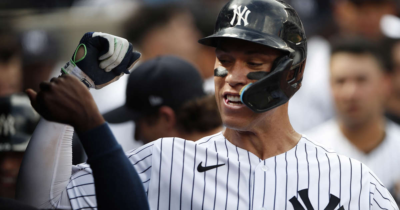 61 Homers! Aaron Judge Ties Roger Maris With Another Monster Blast. By James Wagner / NYT
61 Homers! Aaron Judge Ties Roger Maris With Another Monster Blast. By James Wagner / NYT
In one of the greatest seasons in major league history, Judge, the Yankees outfielder, has matched Maris’s American League record for home runs in a single season.
Maris’s record was eventually surpassed by three different players, all of whom have been connected to performance-enhancing drugs. But on Wednesday night at Rogers Centre in Toronto, Aaron Judge — yet another Yankee, and an outfielder who has played his entire career in the era of drug testing — matched Maris’s famous mark, hitting his 61st home run of what has been a spectacular season. Read more
 Howard swim team, in historic meet, elevates Black profile in the sport. By Gene Wang / Wash Post
Howard swim team, in historic meet, elevates Black profile in the sport. By Gene Wang / Wash Post
Members of the Howard swimming and diving team cheer on their teammates against Georgetown at the Battle at the Burr. (Michael A. McCoy for The Washington Post)
The draw on a soggy and overcast afternoon was a swim meet against crosstown rival Georgetown billed as the Battle at the Burr, where an announced crowd of 2,000-plus packed the seating area above the pool for the sold-out event organizers indicated was the most attended aquatics competition in school history. “This is my first time being at a meet like this,” Simon said of the energy at Burr. “This is like a great experience. Our dual meets usually are always hype, but this is probably times 10, which is crazy. Being a part of it, just being on the block and knowing there’s a crowd that looks like me, that really supported me and helped me through my races.” Read more